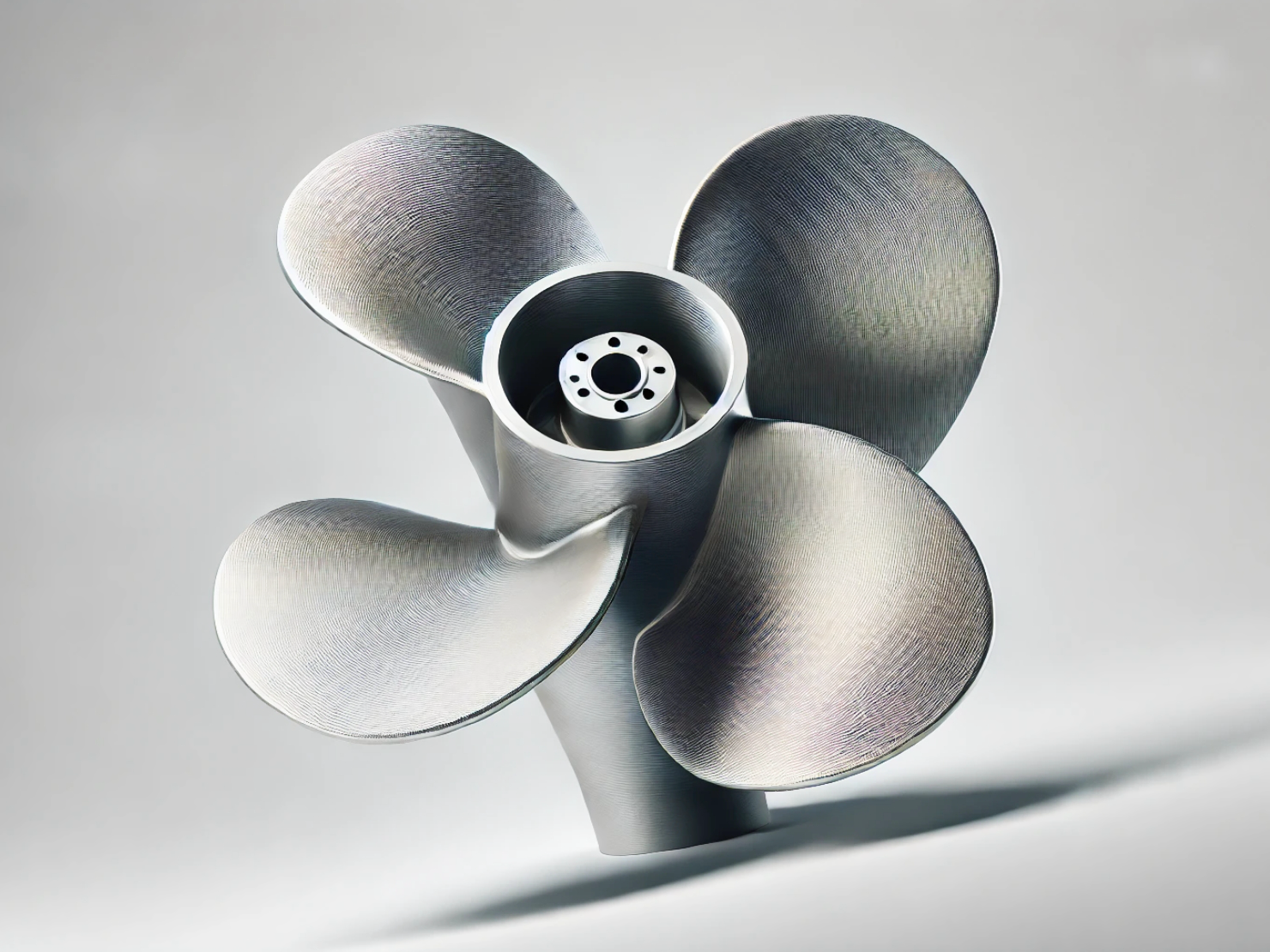Durable Stainless Steel 3D Printing: Corrosion-Resistant Marine Propellers Ship Components
Introduction
Durable stainless steel 3D printing is transforming the marine industry by enabling the production of high-strength, corrosion-resistant components such as custom propellers, brackets, and structural ship parts. Using advanced metal 3D printing technologies like Selective Laser Melting (SLM) and Direct Metal Laser Sintering (DMLS), marine-grade stainless steels such as SUS316L and SUS304L deliver excellent mechanical performance in saltwater environments.
Compared to traditional casting and machining, stainless steel 3D printing for marine applications reduces material waste, shortens production cycles, and creates optimized designs for enhanced hydrodynamic performance and long-term durability.
Applicable Material Matrix
Material | Ultimate Tensile Strength (MPa) | Yield Strength (MPa) | Elongation (%) | Corrosion Resistance | Marine Application Suitability |
|---|---|---|---|---|---|
570 | 485 | 40% | Excellent | Propellers, underwater components | |
520 | 220 | 55% | Very Good | Non-critical ship parts | |
1000 | 880 | 15% | Good | High-strength marine structures | |
650 | 450 | 20% | Moderate | Wear-resistant marine parts | |
700 | 500 | 15% | Moderate | Marine cutting tools and valves | |
560 | 240 | 50% | Excellent | Ship deck equipment, fittings |
Material Selection Guide
SUS316L: Featuring a pitting resistance equivalent number (PREN) of approximately 26, SUS316L is highly resistant to chloride-induced corrosion, making it ideal for long-term immersion in seawater. Its tensile strength of 570 MPa and elongation of 40% ensure excellent structural integrity for custom propellers, underwater housings, and marine pump components.
SUS304L: With an elongation of 55% and good general corrosion resistance, SUS304L is suitable for manufacturing ship deck structures, non-submerged brackets, and equipment mounts. Its tensile strength of 520 MPa and improved weldability support complex assembly needs while maintaining resistance to marine atmosphere exposure.
SUS15-5PH: Providing a high tensile strength of 1000 MPa and yield strength of 880 MPa after heat treatment, SUS15-5PH is preferred for critical marine structural elements such as load-bearing brackets, shafts, and mechanical supports. Its moderate corrosion resistance is sufficient for protected marine environments or above-waterline components.
SUS410: As a martensitic stainless steel with a hardness reaching up to 500 HV after heat treatment, SUS410 is used in applications demanding high wear resistance. It is suitable for marine pump impellers, valve bodies, and wear plates, operating efficiently even under high sand or particulate exposure in seawater.
SUS420: Known for its excellent hardness (up to 550 HV after hardening) and moderate corrosion resistance, SUS420 is well-suited for marine-grade cutting tools, valves, and sealing components where both mechanical wear and resistance to saline exposure are required.
SUS316: Offering similar corrosion resistance to SUS316L but with slightly higher tensile strength (560 MPa), SUS316 is often selected for ship fittings, ladders, handrails, and deck hardware, where formability, aesthetic finish, and saltwater durability are all important.
Process Performance Matrix
Attribute | Stainless Steel 3D Printing Performance |
|---|---|
Dimensional Accuracy | ±0.05 mm |
Density | >99.5% Theoretical Density |
Layer Thickness | 20–60 μm |
Surface Roughness (As-Printed) | Ra 5–15 μm |
Minimum Feature Size | 0.5 mm |
Process Selection Guide
Superior Corrosion Resistance: Stainless steels like SUS316L maintain mechanical integrity and resist degradation in aggressive saltwater environments, critical for long service life in marine applications.
Complex Hydrodynamic Designs: 3D printing enables optimized propeller shapes, impellers, and underwater control surfaces, improving ship fuel efficiency and performance.
Weight and Material Savings: Reduces unnecessary mass through topology optimization, enhancing vessel speed and maneuverability.
Custom On-Demand Production: Speeds up replacement part manufacturing, minimizing vessel downtime and reducing inventory requirements.
Case In-Depth Analysis: SUS316L 3D Printed Marine Propeller for Custom Vessel
A yacht manufacturer required lightweight, corrosion-resistant propellers with optimized hydrodynamic performance for a new high-speed vessel. Using our stainless steel 3D printing service with SUS316L, we produced propellers achieving tensile strength of 570 MPa, elongation of 40%, and density >99.5%. Topology optimization reduced propeller mass by 15% while enhancing thrust efficiency by 10%. Post-processing included CNC machining for precision finishing and electropolishing to maximize corrosion resistance in seawater.
Industry Applications
Marine and Offshore
Custom marine propellers, thrusters, and impellers.
Structural components for shipbuilding such as brackets, supports, and cleats.
Corrosion-resistant underwater housings and sensor enclosures.
Defense and Naval Systems
High-strength fittings and mounting systems for military vessels.
Customized hydrodynamic elements for submarine and surface ships.
Renewable Marine Energy
Components for tidal turbines and offshore renewable platforms.
Saltwater-resistant mechanical parts for floating solar systems.
Mainstream 3D Printing Technology Types for Stainless Steel Marine Parts
Selective Laser Melting (SLM): High-density, precision stainless steel parts designed for optimal performance in marine environments.
Direct Metal Laser Sintering (DMLS): Ideal for corrosion-resistant marine parts with intricate geometries and high surface quality.
Binder Jetting: Useful for large-batch production of stainless steel ship parts where post-sintering density enhancements are acceptable.
FAQs
What stainless steel grades are best suited for 3D printed marine propellers?
How does stainless steel 3D printing improve ship propeller performance and durability?
What post-processing methods are used to enhance corrosion resistance of marine 3D printed parts?
Can stainless steel 3D printed parts withstand continuous saltwater exposure?
How does 3D printing speed up replacement part production for the marine industry?

